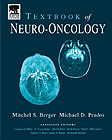Part 1: Basic Essential Principles
Section A: Basic Science
Chapter 1: The Epidemiology of Brain Tumors
Chapter 2: Molecular and Cell Biology
Chapter 3: Animal Models
Section B: Diagnosis
Chapter 4: Diagnostic Imaging
Chapter 5: Pathologic Classification
Section C: Treatment Principles
Chapter 6: Neuro-Endocrinology
Chapter 7: Neurotology
Chapter 8: Neuro-Ophthalmology
Chapter 9: Surgical Strategies in the Management of Brain Tumors
Chapter 10: Basic Concepts Underlying Radiation Therapy
Chapter 11: Chemotherapy Principles
Chapter 12: Treatment Principles: Neuro-interventional Techniques
Chapter 13: Immunotherapy
Chapter 14: Gene Therapy
Chapter 15: Functional Outcomes
Chapter 16: Clinical Trials
Part 2: Tumor-Specific Principles
Section A: Intra-axial Tumors
Chapter 17: Diffuse Astrocytoma
Chapter 18: Anaplastic Astrocytoma
Chapter 19: Glioblastoma Multiforme
Chapter 20: Pilocytic Astrocytoma
Chapter 21: Pleomorphic Xanthoastrocytoma
Chapter 22: Subependymal Giant Cell Astrocytoma
Chapter 23: Oligodendroglial Tumors
Chapter 24: Mixed Gliomas
Chapter 25: Ependymal Tumors
Chapter 26: Choroid Plexus Tumors: Choroid Plexus Papilloma and Choroid Plexus
Carcinoma
Chapter 27: Astroblastoma
Chapter 28: Gliomatosis Cerebri
Chapter 29: Chordoid Glioma of the Third Ventricle
Chapter 30: Mixed Neuronal- Tumors
Chapter 31: Neuronal Tumors
Chapter 32: Dysembryoplastic Neuroepithelial Tumor
Chapter 33: Pineocytoma
Chapter 34: Pineoblastoma
Chapter 35: Medulloblastoma (Infratentorial PNET)
Chapter 36: Adult Supratentorial Primitive Neuroectodermal Tumors
Chapter 37: Lipomatous Tumors
Chapter 38: Fibrous Tumors
Chapter 39: Melanocytic Tumors
Chapter 40: Hemangioblastoma
Chapter 41: Lymphomas and Hemopoietic Neoplasms
Chapter 42: Germ Cell Tumors
Section B: Extraaxial and Cranial Base Tumors: Tumors of the Cranial Base with
Special Consideration of Skull Base Tumors
Chapter 43: Acoustic Neuroma (Vestibular Schwannomas)
Chapter 44: Non-Acoustic Schwannomas of the Cranial Nerves
Chapter 45: Meningiomas
Chapter 46: Meningeal Hemangiopericytomas and Sarycomas
Chapter 47: Pituitary Adenomas
Chapter 48: Chordomas and Chondrosarcomas of the Cranial Base
Chapter 49: Carcinoma of the Paranasal Sinuses/Olfactory Neuroblastomas
Chapter 50: Paragangliomas of the Skull Base
Chapter 51: Craniopharyngiomas
Chapter 52: Epidermoid Tumors
Section C: Metastases to the Brain
Chapter 53: Brain Metastasis from Non-Small Cell Lung Cancer
Chapter 54: Small Cell Lung Carcinoma
Chapter 55: Management of CNS Metastases from Breast Carinoma
Chapter 56: Brain Metastases from Malignant Melanoma
Chapter 57: Brain Metastases: Renal Cell Carcinoma
Chapter 58: Intracerebral Metastatic Colon Carcinoma
Chapter 59: Gynecologic Malignancies
Chapter 60: Metastasis from Unknown Primaries
Chapter 61: Skull Base Metastasis
Section D: Spinal Axis Tumors
Chapter 62: Spinal Axis Tumors: Incidence, Classification, and Diagnostic
Imaging
Chapter 63: Nerve Sheath Tumors of the Spine
Chapter 64: Spinal Meningiomas
Chapter 65: Myxopapillary Ependymomas
Chapter 66: Intramedullary Ependymomas
Chapter 67: Spinal Cord Astrocytomas: Presentation, Management, and Outcome
Chapter 68: Spinal Cord Hemangioblastomas
Chapter 69: Benign Tumors of the Spine
Chapter 70: Malignant Primary Tumors of the Vertebral Column
Chapter 71: Therapeutic Options for Treating Metastatic Spine Tumors
Chapter 72: Intrinsic Metastatic Spinal Cord Tumors
Section E: Peripheral Nerve Tumors
Chapter 73: The Evaluation and Management of Benign Peripheral Nerve Tumors and
Masses
Chapter 74: Malignant Peripheral Nerve Tumors
Section F: Pediatric Neuro-Oncology
Chapter 75: Supratentorial Low Grade Gliomas
Chapter 76: Optic Pathway Gliomas
Chapter 77: Thalamic Gliomas
Chapter 78: Midbrain Gliomas
Chapter 79: Supratentorial High Grade Gliomas
Chapter 80: L’Hermitte Duclos Disease
Chapter 81: Cerebellar Astrocytomas
Chapter 82: Br


